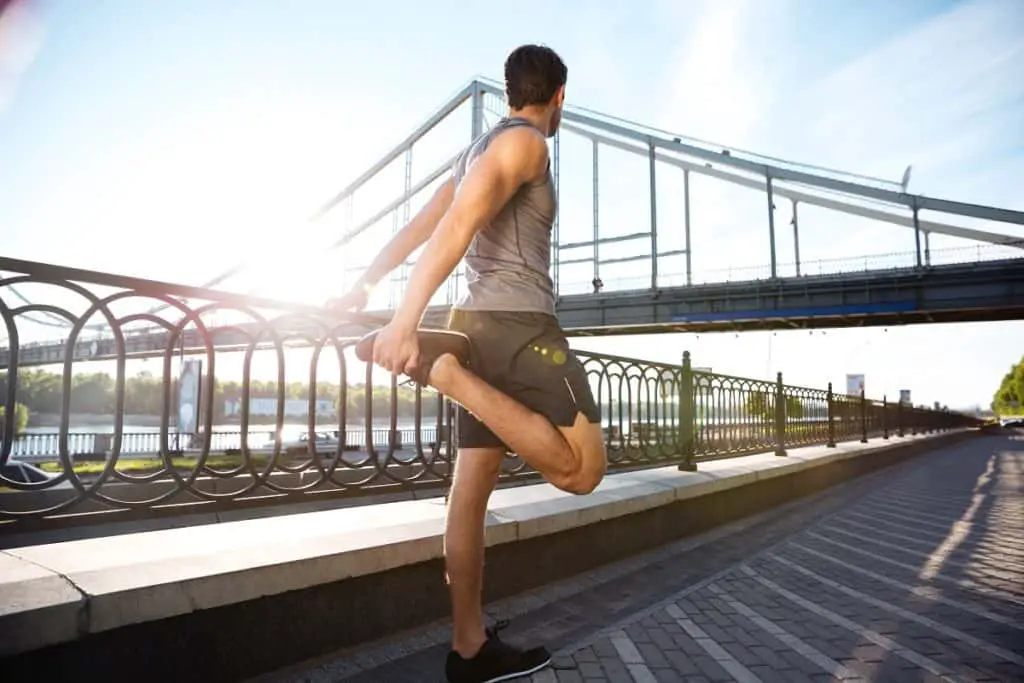It isn’t possible to talk about the best barefoot running shoes or barefoot running in general without mentioning the 2010 book Born to Run by Christopher McDougall. This book singlehandedly turned the world onto the benefits of barefoot running. It inspired other books, academic studies and running shoe manufacturers to focus attention on this topic.
The excitement around barefoot running didn’t continue the rise that seemed unstoppable at the time. But there remains a hardcore bunch of devotes and new runners are discovering the joy of barefoot running every year.
The ‘Less Shoe, More You’ philosophy is here to stay and loved by millions of runners around the world. Read on to find out more about how to select the best barefoot running shoes for you.
Table of Contents
What Are Barefoot Shoes
As the name suggested barefoot shoes give the wearer the feeling that they are in fact not wearing shoes at all.
They are a minimalist, light and flexible shoe that put the runner in close contact with the ground. A sense of freedom is reported all proponents of this type of running.
Barefoot ‘vs’ Zero Drop
Its important to understand the difference between barefoot and zero drop.
Zero drop refers to the fact that from heel to toe there is no difference in the height of the shore. This type of shoe will have a degree of cushioning for the runner.
Barefoot running shoes are by their very nature zero drop but they do not have the cushioning provided in a ‘zero drop’ shoe.
Both types have a potential place in a runners rotation of shoes. They are used for very different purposes and should be investigated thoroughly before jumping into a pair of either type.
Possible Risks Of Barefoot Running
If you are new to running or an experienced runner, barefoot running shoes should be approached with careful consideration.
As a new runner you wont be running very far to start. Put barefoot running shoes into the equation and you should be running fewer miles for longer.
An experienced runner will need to relearn how to walk before they can run. One of the better barefoot shore manufacturers, Vivo, recommend taking a very long time before a 10k distance is attempted.
Unless approached with some careful planning and thought. The lack of cushioning in the shoe will more than likely lead to an injury of some description.
But with the correct consideration running in barefoot shoes can be a joyful and uninhibited experience.
Barefoot Running for Injury Prevention
There is an argument that the introduction of barefoot running into the training of a runner will help reduce the risk of injury. A well adapted barefoot runner can be spotted by the very well developed muscle on the front of the lower leg. This muscle acts as a shock absorber when the cushioning of a ‘normal’ running shoe is removed.
The feet of a barefoot runner are strong. They have to be to compensate for the absence of the foam in the shoe.
Getting these and other benefits from barefoot running is an attractive proposition for all runners.
Can Barefoot Running Improve Performance
A study by the University of New Hamphsire was carried out in 2013. Its objective was to find out if barefoot running could improve running economy. Neil James Baroody completed this excellent study over a period of 10 weeks. I feel slightly ashamed that I’m going to skip to the end to keep this brief and I recommend you take a look at the full study.
Runners did see an improvement in performance, good news! However for the result to be statistically significant a larger scale study would be the logical next step.
How To Pick A Pair Of Barefoot Shoes
The same rules apply to the selection process for barefoot running shoes as for cushioned running shoes.
Comfort rules!
Choose a shoe for the terrain you’ll be running on. There are still variations to suit road and trail.
Consider transitioning to barefoot via zero drop shoes. If you feel you maybe prone to injury, taking this intermediate step may help prevent an injury.
How To Begin Running In Barefoot Shoes
Walk before you run.
Don’t throw on a pair of barefoot running shoes and try to bang out a fast 10k. That will end in disaster.
Plan your transition. Walk in your new shoes for a few days or weeks before running in them. When you start to run do not go far. Round the block once and see how you feel after the run and the next day. You’ll be using muscles and tendons in ways you haven’t been using them and they will need time to adapt.
How much time will vary from person to person but it will be measured in months. If you are determined to only run in barefoot shoes, take your time to increase miles from that initial run around the block.
If you want to add barefoot running into your training mix for the foot and leg strength benefits. Take your time both in your barefoot shoes and when you pull your bouncy shoes back on.
Conclusion: Best Barefoot Running Shoes
Be careful when running in barefoot shoes. The path to enlightenment and carefree natural running is littered with stories of people who tried it and got hurt. Very slow steady and consistent progress is the only way forward.
If you are prone to injury or over 40 be even more careful.
There are benefits to be had but there is a risk they may come at a cost.



